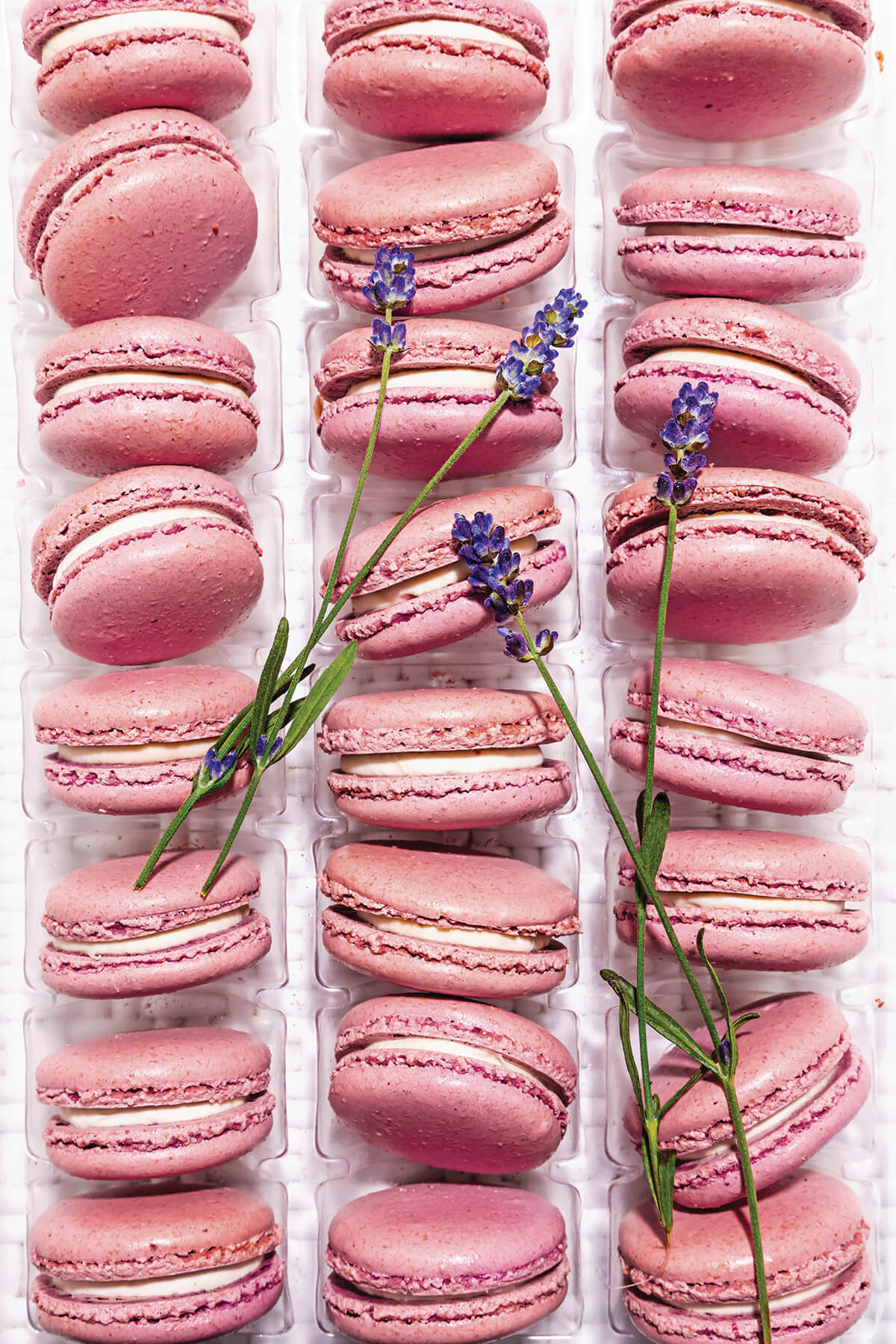Food & Drink
Lavender is Cropping Up Everywhere on Local Menus
From lattes to sweet treats, the edible herb adds color and flavor to everything.

Lavender is not just for your potpourri dish anymore. Lately the edible herb is showing up everywhere from the lavender-almond shortbread at Little Italy’s Ovenbird Bakery to the lavender lemonade at Green House Juice Cafe in Charles Village to the iced oat-lavender-vanilla coffee at Atwater’s in Belvedere Square.
“The use of floral notes in food is trending right now,” says Manuel Sanchez, co-owner of Sacré Sucré, whose lavender macarons (pictured) are a top-seller. “And it’s not just lavender. Herbal flavors like rose, lemon verbena, and sage add an extra layer to the tasting experience.”
Sanchez also enjoys adding the herb to various beverages at his Fells Point shop. “We make a lavender lemonade with yuzu,” he says. “And a lavender London Fog with Earl Grey tea.”
While lavender’s vibrant hue has been boosted by social media in the 21st century, the sweet-smelling herb, a close cousin to mint, has been celebrated for over 2,500 years. The ancient Egyptians used lavender for perfume and during the mummification process. In ancient Greece it was used for healing backaches and insomnia. The Romans used lavender for healing baths, hence the name, which derives from the Latin verb lavarare, meaning “to wash.” The Romans also used lavender oil in soaps and for cooking and carried it with them throughout the Roman Empire. But the idea of eating the tiny purple flower buds is relatively new.
“Cooking with lavender takes some restraint,” says Sanchez, whose lavender is sourced from Provence, France. “It has a natural bitterness—if you eat the bud by itself, it will taste strong and bitter if you use too much of it. It’s one of those flavors that if you don’t taste it at first and then you add more, you can go over the line. It can go from nice to bad in no time.”